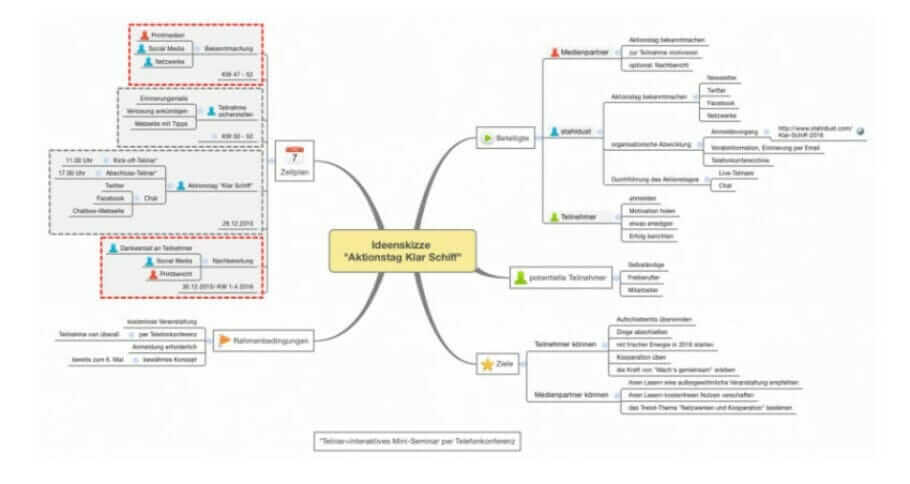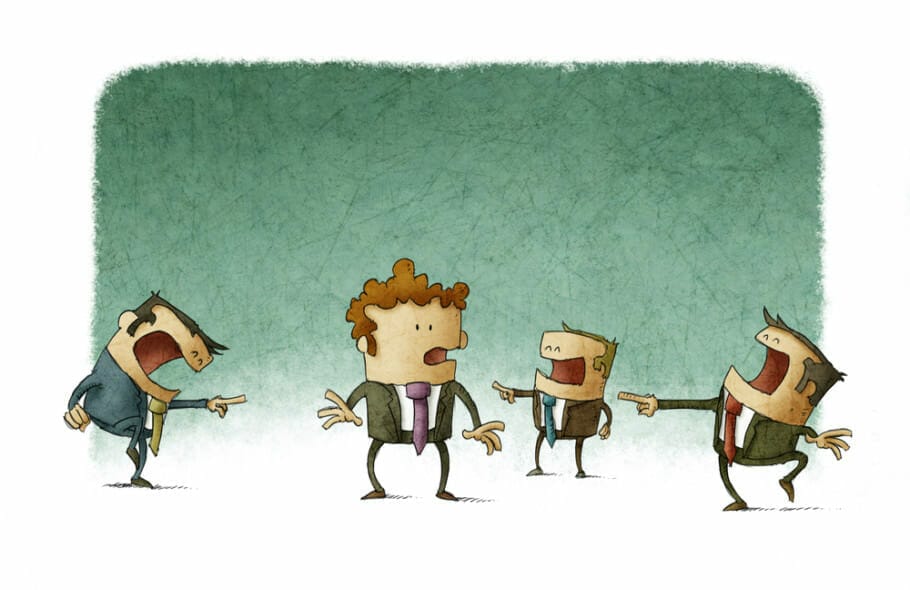For their successful, good life Information you really need: Government-funded publisher, awarded the Global Business Award as Publisher of the Year: Books, Shops, data-driven AI-Services. Print and online publications as well as the latest technology go hand in hand - with over 20 years of experience, partners like this Federal Ministry of Education, customers like Samsung, DELL, Telekom or universities. behind it Simone Janson, referenced in ARD, FAZ, ZEIT, WELT, Wikipedia.
Disclosure & Copyright: Our articles are written and edited by humans, and in some cases like this, we use the assistance of artificial intelligence to optimize texts. Image material created as part of a free cooperation with Shutterstock. Text originally from: “Self-efficacy: Clear on the inside, strong on the outside” (2015), published by BusinessVillage Verlag, reprinted with the kind permission of the publisher.
The onion principle of psychology as a mental training method: 12 steps to self-efficacy success
By Jens Korz (More) • Simone Janson (More) • Last updated on October 04.09.2023, XNUMX • First published on 02.03.2016/XNUMX/XNUMX • So far 4261 readers, 1832 social media shares Likes & Reviews (5 / 5) • Read & write comments
emotional blockages can help us reach our Set very nice in ways stand. With the onion principle Psychology they can be solved in 12 steps.

- The onion principle of psychology: solving problems step by step
- The 12 basics of the onion principle at a glance
- How the onion principle works in psychology
- The onion principle in practical application
-
In 12 steps to new, better beliefs
- 1. Doubt the belief
- 2. Visualize in writing
- 3. Find new formulation with four confirmations
- 4. Train the subconscious through mental training
- 5. Examine: How did your previous beliefs come about?
- 6. Where did the beliefs come from?
- 7. Why are the beliefs wrong?
- 8. Reasons for the old belief:
- 9. Forgive others
- 10. Make peace
- 11. Act on your new belief
- 12. The success diary
- Conclusion: The onion principle of psychology is a useful mental training method
- Top books on the subject
- Read text as PDF
- Advice on success, goal achievement or marketing
- Book eCourse on Demand
- Skate eBook as desired
The onion principle of psychology: solving problems step by step
The onion principle in psychology is one metaphor, which serves to demonstrate the multi-layered nature of human Behavior and Personality to illustrate. It helps you step by step against negative beliefs and mental ones Problems proceed.
Similar to the layers of an onion, people have different levels of behavior, emotions and thoughts that make up their personality. This principle underlines the Idea, that external behavior often represents only the top layer, while deeper layers include emotions, beliefs, motivations and unconscious processes.
The 12 basics of the onion principle at a glance
The books on the subject (advertising)
The onion principle in psychology, which describes human behavior and personality as multi-layered Structure represents has a profound influence on psychological research and therapy. The Concept includes the following points:
- Multilayered behavior: The Onion Principle powerfully illustrates that human behavior encompasses multiple layers, from the superficial level of observable behavior to the deeper layers of emotions, beliefs, and unconscious processes.
- Holistic approach: The concept promotes a holistic approach to psychology that goes beyond superficial considerations. A comprehensive understanding of a person requires analyzing all layers to understand their personality and motivations.
- Self-knowledge: The Onion Principle offers a metaphor for the process of self-knowledge. People can gain deeper insight into their emotions, beliefs, and motivations by peeling back their own metaphorical onion layers.
- Therapeutic use: In psychological therapy, the onion principle is often used to help clients view their problems from different levels. This enables a more effective therapy process and promotes personal growth.
- Complexity of the psyche: The concept emphasizes the complexity of the human psyche. By highlighting the complexity of behavior and personality, it helps avoid stereotypical and superficial evaluations.
- Understanding behavior patterns: By analyzing the different layers, psychologists and therapists can better understand behavioral patterns. This is crucial for identifying causes of problems and developing tailored solutions.
- Contextualizing behavior: The onion principle allows behavior to be viewed in context. It takes into account that external influences and personal experiences influence the different layers and thus shape overall behavior.
- Development and change: The concept suggests that development and change can occur at different levels. Positive change often requires awareness and work on the deeper layers of the personality.
- Understanding Relationships: In interpersonal relationships, the onion principle is helpful in recognizing the diversity of emotions and needs. This promotes better communication and conflict resolution.
- Self reflection: The concept promotes self-reflection, both on an individual and professional level. Psychologists and therapists can use the onion principle to question their own prejudices and assumptions.
- Research impulses: In psychological research, the onion principle encourages the development of new approaches to studying the connections between the different layers of human behavior.
- Respect for individuality: The conclusion of the onion principle emphasizes respect for the individuality of each person. It shows that the diversity of layers and experiences leads to a unique and multifaceted self that should be properly taken into account. Overall, the Onion Principle proves to be a significant concept in psychology, helping to develop a deeper understanding of human nature and enabling effective therapeutic intervention.
How the onion principle works in psychology
The outermost layer of the onion represents a person's observable behavior, visible in social interactions and daily life. Underlying layers can include feelings, personal beliefs, values and individual motivations. The Onion Principle illustrates that to fully understand a person, it is necessary to look beyond the obvious behavior and explore the deeper layers.
In the psychological Consulting and therapy, the onion principle is often used to help clients understand their own feelings, thoughts, and motivations. By peeling back the metaphorical layers of the onion, deeper self-knowledge and awareness of the underlying causes of behaviors can be achieved. This concept emphasizes the complexity of the human psyche and promotes a holistic approach to analyzing behavior and personality.
The onion principle in practical application
Discounts for your success (advertising)!
The onion principle involves gradually approaching and changing beliefs. This Method is suitable for most introverted and change-averse people. This is an eight-step process. Concentrate on one belief that you want to change - as a rule, this will be your first and most important belief because it is the most blocking of your beliefs. Here are a few examples of the most common negative thought patterns:
- I am only loved when I bring performance.
- I never find a partner that suits me.
- Life is hard.
- All beginnings are difficult.
- I can not do it.
- I am not worth it.
- I'm unimportant.
- I'm not lovable.
And then see below step by step how you can change it.
In 12 steps to new, better beliefs
First, focus on the belief you want to change. Be clear about this priorities. It's better to change just one belief at a time than all at once. Because one of the most common mistakes when changing thought patterns is that you try to change everything at once. Here it is important to use the salami tactic, i.e. slice by slice.
To make it clear how the method works, I will explain it using an example sentence. For this I use one of the most common dogmas in our world Society:
“I'm only loved when I Performance bring."
1. Doubt the belief
Make yourself up now clearthat your previous thought pattern does not correspond to the truth. Because what's true on this one Welt? Isn't everything subjective anyway due to our perception?
One person judges a situation one way, another completely differently. So your belief system is also subjective! Now write down at least three reasons why your belief is wrong. Why isn't what you think true? For our sample set this means:
My brother is loved even though he performs less than me. I love my parents, even if they don't perform.
Although I have already made mistakes and did not perform well, I am loved by my partner.
2. Visualize in writing
Write down how your belief should be positive. And forms You doing this exactly so that you die change also internalize.
How should this belief be yours? Opinions after sound to make you feel better feel, perceive yourself as more valuable and thus be able to achieve your personal goals more easily in the future? Visualize this belief in writing.
Write down again three reasons why this new belief might be true. What experiences have you had in the past, which could confirm this affirmation?
3. Find new formulation with four confirmations
- I am loved, just as I am.
- If I was no longer in the world, some people would be very sad.
- My partner likes to spend time with me. Just because.
- I can forgive other miscompensation and forgive me mine as well.
4. Train the subconscious through mental training
In the fourth step you shape your subconscious mind with your new way of thinking through a kind of mental training. You do this until it has become a new pattern of faith and works without waking consciousness.
Consciously use the new beliefs to affirm and shape your subconscious mind.
5. Examine: How did your previous beliefs come about?
For example, you say yourself audible seven times a day in a specific and, if possible, always the same situation (for example, when driving to work in the car) before you report to Executive go) your new belief.
Ask Now think about why you developed your old belief in the first place. What experiences or messages led to this?
6. Where did the beliefs come from?
Maybe it has something to do with your parents' upbringing? Does the sentence come from your school days because teachers or classmates repeatedly told you this belief?spiegelt have. Or does this phrase come from previous partnerships?
Our dogmas, the truths of which we are firmly convinced, characterize us, our thoughts, feelings and actions. Often we overlook only one thing: if we believe something, that is only a possible view of things and not the whole truth.
7. Why are the beliefs wrong?
Again, there are three reasons to note why a certain person (or even several people) was wrong in having you think that way.
- Why can not this person actually judge how you are in truth?
- Perhaps because no one knows you as well as you know yourself?
- Why should this person be able to assess what you can achieve in life and what is not?
8. Reasons for the old belief:
- I am only loved when I bring performance.
- I have a perfectionist mother and no one can do it right.
- Perfection stands for value.
- Resting was always designed for me as lazy, and I also needed breaks.
9. Forgive others
If a particular person has shared in your limiting beliefs and your bad self-confidence, then it is important that you forgive this person.
Let go. The past is no longer changeable and if you accept your development so far, you can accept and change yourself.
10. Make peace
Forgive that person (or people) for changing your thought patterns negative has (have) influenced. Make a written reconciliation agreement.
Aid to wording: “I make peace with…”
11. Act on your new belief
Prove your own self, and thus your subconscious mind, simply the opposite, acting as if you were quite different. - According to our example feel valuable, even without performance.
The best way to do this is to provide counter evidence to your old beliefs and thus evidence of your new beliefs through your daily actions. Think about what you can do to show yourself that your negative belief doesn't really apply to you.
12. The success diary
Take time each evening and jot down in a book everything that went well that day. Where were you successfully? In the beginning, write down in particular the successes in changing your negative belief.
Most people get along well with the onion principle described here. It is clearly structured and does not require professional support in the form of a coach or therapist. It just requires a certain Discipline.
Conclusion: The onion principle of psychology is a useful mental training method
In conclusion, the onion principle in psychology powerfully illustrates the multi-layered nature of human behavior and personality. The onion metaphor has proven to be a powerful tool for explaining the variety of emotions, beliefs, and motivations that shape a person's behavior. The application of this principle in psychological research, therapy and interpersonal contexts enables a deep understanding of the complexity of the human psyche. By peeling back the metaphorical layers of the onion, people can not only better understand their own motivations and behaviors, but also improve their relationships with others.
The onion principle promotes self-reflection, self-knowledge and a respectful attitude recognition the individuality of every person. In psychological therapy, the onion principle opens up new perspectives for identifying and overcoming personal challenges. It encourages looking beyond superficial symptoms and addressing the underlying causes of problems. The multi-layered view of behavior offers a path to sustainable behavior Solutions and personal growth.
Overall, the Onion Principle has had a significant impact on the way psychologists and therapists understand and treat human behavior. It highlights the need for a holistic approach that respects the complexity and diversity of the human psyche. The onion principle thus helps to not only resolve conflicts and support personal development processes, but also to deepen understanding between people and promote an empathic connection.
Top books on the subject
Read text as PDF
Acquire this text as a PDF (only for own use without passing it on according to Terms and conditions): Please send us one after purchase eMail with the desired title supportberufebilder.de, we will then send the PDF to you immediately. You can also purchase text series.
4,99€Buy
Advice on success, goal achievement or marketing
Do you have questions about careers, Recruiting, personal development or increasing reach? Our AI consultant will help you for 5 euros a month – free for book buyers. We offer special ones for other topics IT services
5,00€ / per month Book
Book eCourse on Demand
Up to 30 lessons with 4 learning tasks each + final lesson as a PDF download. Please send us one after purchase eMail with the desired title supportberufebilder.de. Alternatively, we would be happy to put your course together for you or offer you a personal, regular one eMail-Course - all further information!
29,99€Buy
Skate eBook as desired
If our store does not offer you your desired topic: We will be happy to put together a book according to your wishes and deliver it in a format of yours Choice. Please sign us after purchase supportberufebilder.de
79,99€Buy
Here writes for you
 Jens Korz is a personality trainer. Korz, born in 1969, is one of the most booked experts in Germany on the subject of external impact. He has a degree in business administration, actor and psychologist and is a Reiki master and has many years of experience in middle management as a sales manager. He also has a teaching position at the University of Economics and Law in Berlin. More information at thekoach.de All texts by Jens Korz.
Jens Korz is a personality trainer. Korz, born in 1969, is one of the most booked experts in Germany on the subject of external impact. He has a degree in business administration, actor and psychologist and is a Reiki master and has many years of experience in middle management as a sales manager. He also has a teaching position at the University of Economics and Law in Berlin. More information at thekoach.de All texts by Jens Korz.
 Simone Janson is publisher, Consultant and one of the 10 most important German bloggers Blogger Relevance Index. She is also head of the Institute's job pictures Yourweb, with which she donates money for sustainable projects. According to ZEIT owns her trademarked blog Best of HR – Berufebilder.de® to the most important blogs for careers, professions and the world of work. More about her im Career. All texts by Simone Janson.
Simone Janson is publisher, Consultant and one of the 10 most important German bloggers Blogger Relevance Index. She is also head of the Institute's job pictures Yourweb, with which she donates money for sustainable projects. According to ZEIT owns her trademarked blog Best of HR – Berufebilder.de® to the most important blogs for careers, professions and the world of work. More about her im Career. All texts by Simone Janson.
One answer to “The onion principle of psychology as a mental training method: 12 steps to self-efficacy success”
-
Success through self-efficacy - 8: Mental training: Write down how your belief system ... - Exciting contributionDRu1bCyftP #Profile #Development



















Post a Comment